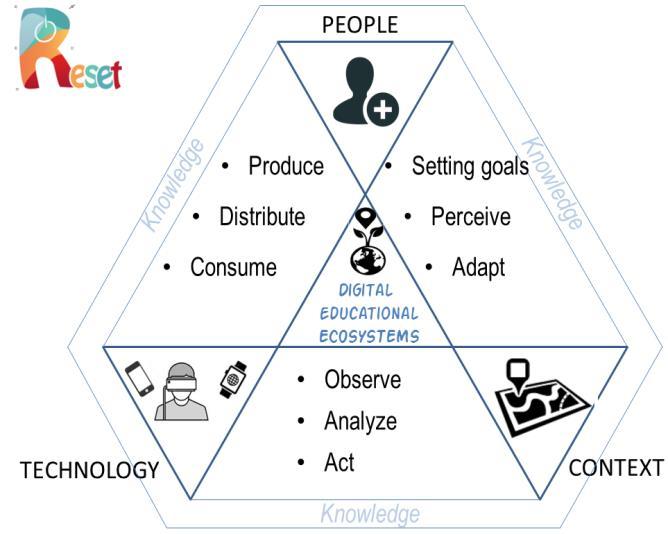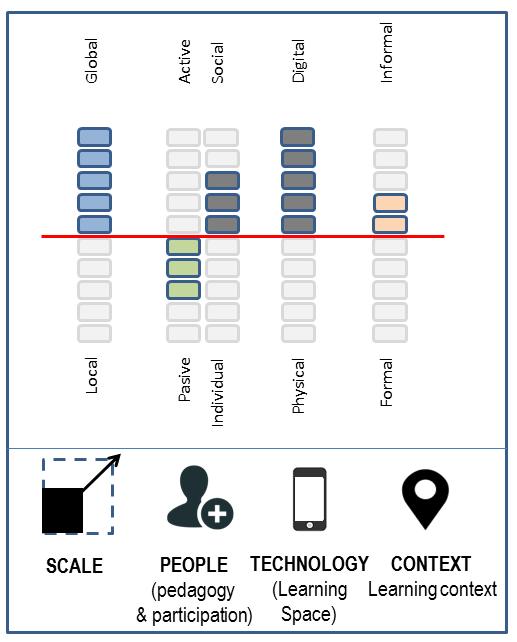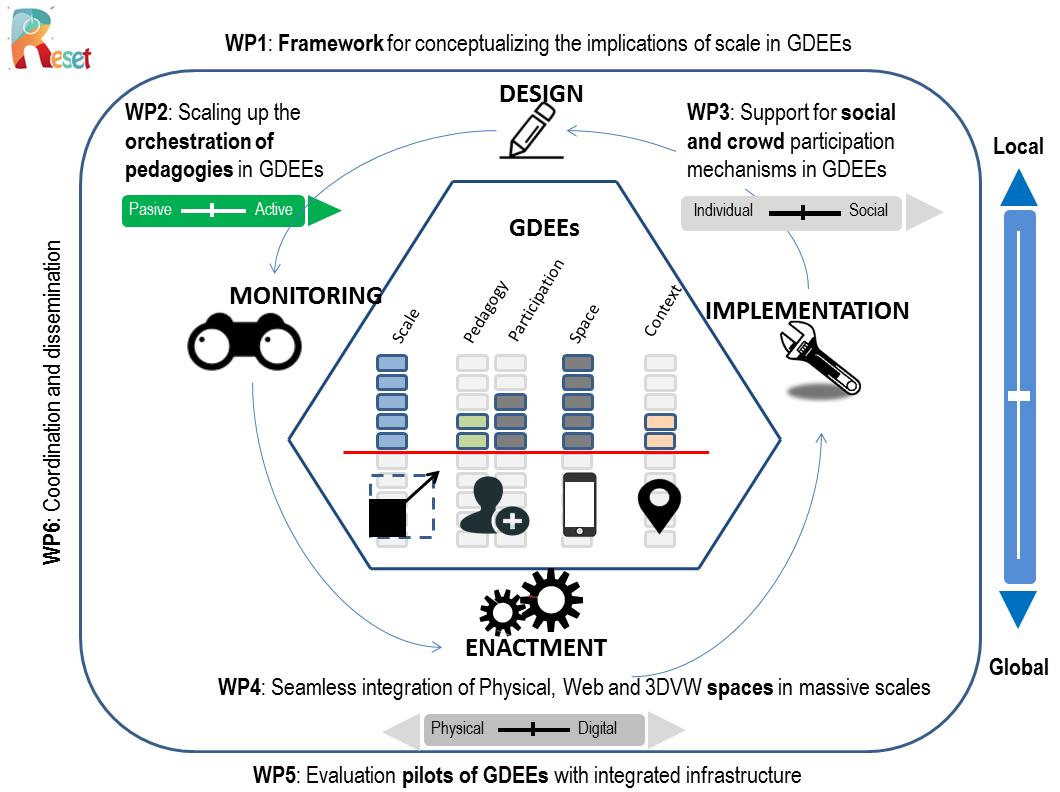ICT has brought important advances in the field of education in the last few years. Among the most important emerging innovations are MOOCs (Massive Open Online Courses), and their small-scale equivalent for residential education (SPOCs – Small Private Online Courses). MOOCs have removed barriers that limited access to learning resources to only a few, helping to balance access to quality education, regardless of the origin of the learner. The popularity of MOOCs and SPOCs has been enhanced by a socio-economic context of scarcity and constant evolution, in which online learning is seen as a way of reducing structural costs in face-to-face instruction, and as a dynamic alternative to offer specific and updated knowledge without the harshness of formal education.

Components of Digital Educational Ecosystems: People, depending on their environment (context), set goals for their own development, perceive the affordances and disturbances of the environment and adapt their behavior consequently. The technology (e.g., peripherals) mediates the observation, analysis and interaction with the environment, and makes it easier for the stakeholders to produce, distribute and consume knowledge in digital educational ecosystems.

Example of spectral characterization of a particular educational ecosystem including the five dimensions: pedagogy, participation, learning space/s, learning context and scale.
Nevertheless, MOOCs and SPOCs present severe limitations. Advances in education in the last decades have shown the effectiveness of the particularization of teaching, the use of active and collaborative pedagogies, the assessment based on competences, and the enactment of situations in which students interact with peripherals and technologies in different spaces at different moments. Current MOOCs and SPOCs are a step back on these advances, mainly because of their massive scale, since they replace particularization with generalization (the same approach is applied to every student); active and collaborative pedagogies with direct instruction (the teacher replicates lectures on new media formats); assessment based on competences with the assessment of knowledge acquired through automatic correction exercises; and the enactment of situations that involve different peripherals, technologies and spaces, with gathering students around a Web platform.
The aim of RESET, which is aligned with the objectives of the Horizon 2020 call, is to reformulate existing educational ecosystems, understood as (1) the set of different stakeholders involved, (2) the didactics and technologies used, and (3) the spaces in which teaching and learning occurs for a given context and scale. To do so, RESET proposes: (1) a set of pilot experiments that address these limitations, (2) a set of didactic guidelines and technological components to address these challenges, and (3) a framework to analyze how the scale (local/global), the space (physical/Web/3DVW), the degree of interaction (active/passive pedagogies, individual/social learning) and the context (formal/informal) affect the different elements in the educational ecosystems. The pilot experiments will be carried out in the fields of engineering and health and in the context of secondary education, higher education, lifelong learning and learning at the workplace. The main challenges are: (1) to tackle the limits of MOOCs and SPOCs imposed by the scale and the Web space (e.g., the use of active pedagogies and the co-design and co-evaluation based on competences), (2) to take advantage of their benefits in face-to-face contexts at a lower scale (e.g., audiovisual production, immediate feedback, social learning, learning analytics), and (3) to orchestrate “flipping the classroom” approaches in blended-learning contexts. The project also has an advisory board of national and international experts on education and educational technology, as well as on the application of these to different scales.

Dynamics in GDEEs: Life cycle of a pilot experience and relationship with work packages and affordances in the five dimensions: pedagogy, participation, learning space/s, learning context and scale.